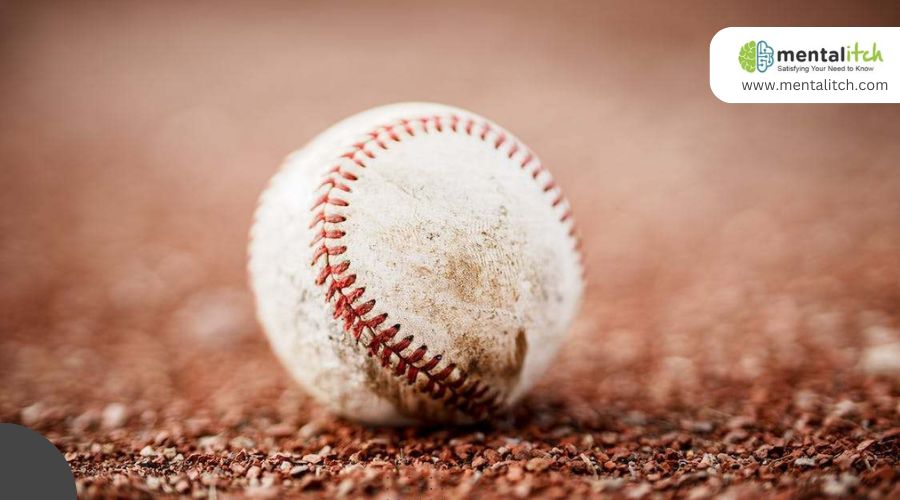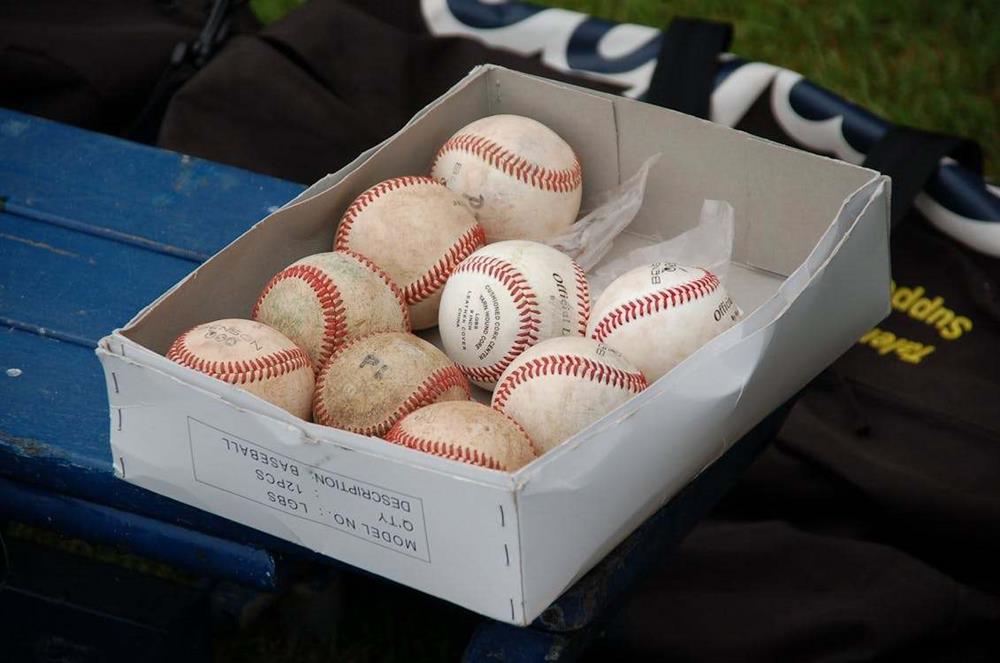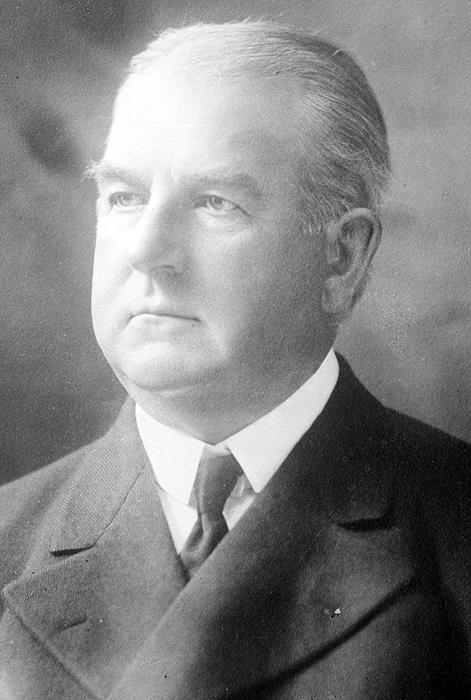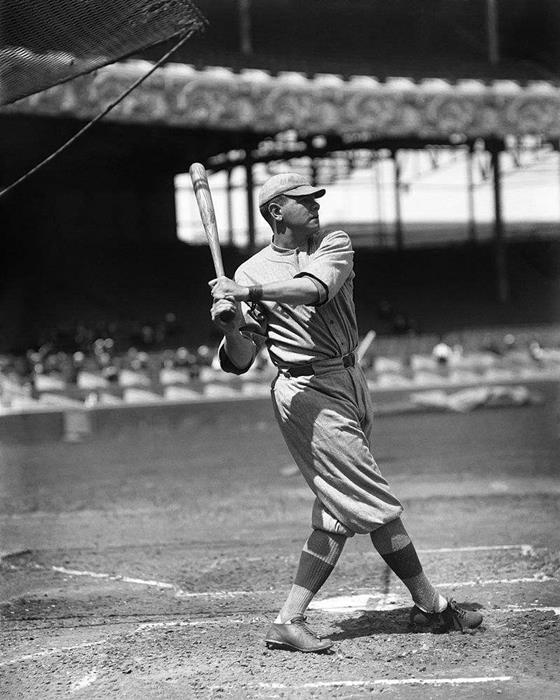The story of the baseball, much like the game itself, is full of twists, turns, and fascinating evolution. This article aims to trace the history of the baseball, shedding light on its development, the materials used in its construction, and the rules that have shaped its use in the game. We will look at how the ball’s construction has shifted over the years, the impact of these changes on the game itself, and the individuals who have been instrumental in its development.
Baseball Overview
The humble baseball, central to America’s favorite pastime, is a marvel of design and engineering. At its core, the ball consists of a cork or rubber center, wrapped tightly in yarn and covered in leather. Official regulations specify that a baseball must weigh between 5 and 5.25 ounces (142 to 149 grams) and measure between 9 and 9.25 inches (22.9 to 23.5 cm) in circumference.
The introduction of rubber cores for baseballs in the early 1900s significantly altered the game, allowing for longer hits and more dynamic play. This change was accompanied by the adoption of machines to tightly wind the yarn around the core, ensuring consistency in weight and size.
Leather, typically from cowhide, is used for the cover, which is stitched together with 108 stitches—a design element as iconic as the ball itself. The red stitching, introduced in the 1930s, not only contributes to the baseball’s distinctive appearance but also influences its aerodynamics, affecting the pitch’s trajectory.
Over the years, the manufacturing process has seen refinements, especially in the quality and consistency of materials used, but the basic principles of the baseball’s design have remained largely unchanged. This consistency ensures that the game’s integrity is maintained, with each ball meeting strict Major League Baseball standards before it hits the field.
The Early Versions of the Baseball
The early versions of the baseball can be linked to the New York Knickerbockers, a baseball club formed in 1845. These first balls were handmade, often by the players themselves, using rubber cores from old shoes wrapped in yarn and leather. The lack of standardization meant that balls varied significantly in size, weight, and bounce, directly influencing the style and scoring of the games played.
A key figure in the standardization of the baseball was A.G. Spalding, a former player and sporting goods tycoon. In the late 1870s, Spalding’s company began mass-producing baseballs, using a design that featured a rubber core, tightly wound yarn, and a leather cover stitched together in the familiar pattern still seen today. Spalding’s influence extended beyond the manufacturing of the balls; he also played a crucial role in establishing the rules and standards that governed the game, including the specifications of the baseball itself.
Another milestone in the evolution of the baseball came in 1920, following the death of Ray Chapman, a player who was killed after being struck in the head by a pitched ball. This tragedy led to the introduction of a new rule requiring baseballs to be replaced during the game as soon as they became dirty. The change aimed to improve the visibility of the ball for batters, leading to the development of the “live ball” era, characterized by an increase in home runs and a more dynamic style of play.
A.G. Spalding’s Baseball
Albert Goodwill Spalding, a prominent baseball player and manager in the early days of professional baseball, turned his attention to the business of sports equipment in 1876. Recognizing the need for a standardized baseball to support the growing popularity of the game, Spalding founded A.G. Spalding & Bros., a company that would go on to shape the evolution of the baseball.
In the late 19th century, baseballs were inconsistent in size, weight, and construction, often made by players or local craftsmen with whatever materials were at hand. Spalding’s vision was to create a uniform ball that could be used across all levels of play, from amateur leagues to the professional circuits. In 1876, the same year he founded his company, Spalding’s design was adopted by the newly formed National League, setting a standard that would eventually be embraced by the entire sport.
Spalding’s baseball was constructed around a small rubber core, wrapped tightly in yarn, and encased in a leather cover stitched together with 108 stitches. This design not only provided consistency across the game but also improved the ball’s durability and performance.
The “Dead Ball” Era
The Dead Ball Era of baseball, spanning from the early 1900s to around 1920, was a period characterized by low-scoring games, a lack of home runs, and a style of play that emphasized speed, strategy, and skill over power. This era earned its name from the type of baseball used, which was softer and less resilient than the balls used in later periods, leading to fewer long hits and making home runs a rarity.
During this time, pitchers enjoyed dominance over hitters, employing a wide array of pitches and techniques to keep run scores low. The era boasted some of the game’s legendary pitchers, including Cy Young, Walter Johnson, and Christy Mathewson, whose skillful performances highlighted the strategic depth of baseball.
Fielding and base-running were crucial components of the game, with players like Ty Cobb and Honus Wagner achieving fame for their speed and agility. Cobb, in particular, was known for his aggressive base-running, stealing bases, and taking extra bases on hits that would often turn the tide of games.
Ballparks of the Dead Ball Era also contributed to the unique style of play. With vast outfield areas and no standard dimensions, many parks made it difficult for hits to turn into home runs, further emphasizing the need for speed and strategy over brute strength.
The end of the Dead Ball Era is often attributed to several key changes in the sport, including the introduction of a livelier ball, stricter regulations on pitcher’s techniques, and alterations to the rules that favored hitters. The most symbolic end point is Babe Ruth’s emergence as a power hitter, which shifted the focus of the game towards home runs and high-scoring offenses, ushering in what many consider the modern era of baseball.
The “Live Ball” Era
The Live Ball Era of baseball, which began around 1920, marked a significant shift in the sport, primarily due to changes in the baseball itself. This period saw the transition from the softer, less resilient balls of the Dead Ball Era to newer, livelier balls that made home runs more common and dramatically increased scoring.
The introduction of the new ball was not the result of a single event but rather a series of adjustments made by manufacturers under the guidance of Major League Baseball. These adjustments included using a cork center, tighter winding of the yarn, and a more durable leather for the cover, which together made the ball bouncier and more capable of traveling longer distances when hit.
The effect of these changes was immediate and dramatic. The 1921 season saw a surge in home runs, with Babe Ruth setting a then-record of 59 home runs in a single season, a feat that was unthinkable in the Dead Ball Era. This increase in offensive output contributed to larger crowds and greater public interest in baseball, helping to cement its status as America’s national pastime.
The shift to the Live Ball Era also led to changes in how the game was played and strategized. Pitchers had to adapt to the increased offensive power of hitters, leading to the development of new pitching techniques and strategies. Defenses changed their formations and approaches to deal with the likelihood of more potent hits. This era lasted until the mid-20th century, when further changes to the ball and the introduction of new stadiums and artificial lighting continued to evolve the game.
The Baseball in the Late 20th Century
The 1970s saw the introduction of automated pitching machines for batting practice, necessitating a more durable baseball that could withstand repeated high-velocity impacts. Manufacturers responded by refining the construction of the ball, focusing on the quality of the core and the tightness of the yarn winding. These improvements not only extended the life of baseballs but also contributed to a more consistent performance from ball to ball.
One significant figure in the evolution of the baseball during this time was Rawlings, which became the official supplier of Major League Baseball (MLB) in 1977. Rawlings introduced a standardized production process that ensured each ball met strict MLB specifications for size, weight, and elasticity. This standardization was crucial for maintaining the integrity of the game, as variations in ball performance could influence game outcomes.
The 1980s and 1990s witnessed further refinements in the materials used in baseball construction. The core of the ball, previously made from cork and rubber, began to incorporate synthetic materials that offered greater consistency and resilience. Additionally, the leather used for the cover was treated to be more uniform in texture and more resistant to wear and tear, ensuring that the ball would maintain its performance characteristics longer.
One of the most notable events related to the baseball’s evolution in this period was the introduction of the “Rawlings Official Major League Baseball” in the early 1990s. This model was designed to meet precise specifications for major league play and became the standard across all MLB teams. The introduction of this ball was part of a broader effort by the league to standardize equipment and playing conditions, reducing the influence of external variables on the game’s outcomes. For more information on the evolution of baseball as a sport, check out the Exciting History of Baseball.
21st Century Baseball
As the 21st century progresses, the evolution of the baseball reflects advancements in technology, materials science, and a deeper understanding of aerodynamics. This period is characterized by efforts to standardize the ball’s performance, enhance player safety, and address concerns about the consistency of play across Major League Baseball (MLB) and other leagues worldwide.
One of the significant developments occurred in the early 2020s when MLB announced a shift to balls with slightly reduced weight and tighter wound cores. This adjustment aimed to address the surge in home runs, believed to be influenced by changes in the ball’s construction. By fine-tuning the ball’s specifications, MLB sought to balance the game, ensuring that skill and strategy remained at the forefront of play.
Further, the introduction of automated stitching technology marked a significant leap forward. Traditional hand-stitched balls, while iconic, could vary slightly in size and shape, affecting how they behaved in play. Automated stitching, introduced experimentally in the mid-2020s, aimed to produce balls with unparalleled consistency, reducing discrepancies in performance from one ball to the next.
Materials used in the baseball’s construction also saw innovations. Researchers and manufacturers experimented with synthetic leathers and advanced yarns designed to maintain their shape and performance characteristics longer than traditional materials. These new materials promised to make the ball more durable and consistent over its lifespan, a key consideration in professional leagues where the integrity of the game is paramount.
Despite these technological advancements, the core of the baseball—its weight, circumference, and basic construction—remained relatively unchanged, adhering to the traditions of the sport. However, the way each ball is crafted, tested, and approved for game use has evolved, showcasing a blend of tradition and innovation that defines baseball in the late 21st century.
Interesting Facts About the Baseball
Beyond its evolution and the notable changes in materials and manufacturing, there are fascinating tidbits that showcase the baseball’s unique place in sports and culture. Here are ten interesting facts about the baseball that offer a glimpse into its intriguing aspects:
- Rubber Cores: The core of the baseball wasn’t always made of rubber. Early versions of the ball used various materials, including melted shoe rubber, until the adoption of cork and rubber cores in the early 20th century.
- World War II Impact: During World War II, rubber was a critical war material, leading to experiments with alternative materials for the baseball’s core, including cork and balata.
- Stitch Color: The standard red stitching on baseballs was not always the norm. Early baseballs featured stitching in various colors until the red stitch was standardized for better visibility.
- Hand Stitching: Each Major League baseball is hand-stitched, requiring about 15 minutes to complete, showcasing a commitment to craftsmanship in the modern era.
- Mud Treatment: Before play, baseballs are rubbed with a special mud known only as “Magic Mud” from a secret location along the Delaware River, a tradition that dates back to the 1930s to help pitchers get a better grip.
- Longevity in Play: A single baseball in a professional game might last only 5 to 7 pitches on average due to scuffs, hits, and home runs, highlighting the high turnover rate during play.
- Home Run Increase: The design changes to the baseball in the live ball era contributed to a dramatic increase in home runs, illustrating how small modifications can significantly impact the game.
- Temperature Effects: The temperature can affect how far a baseball travels. Warmer balls are more elastic and can fly further, which is why home runs are more common in summer months.
- Patents: The design and materials of baseballs have been subject to numerous patents over the years, reflecting ongoing innovation and attempts to improve the game.
- Presidential Signatures: Since William Howard Taft, U.S. Presidents have traditionally thrown out the first pitch on Opening Day, and baseballs signed by Presidents are highly coveted collectibles.
Conclusion
From its early days of varied shapes and sizes to the highly regulated and meticulously crafted sphere used in today’s major leagues, the baseball has undergone a remarkable transformation. This evolution mirrors changes in the sport itself, reflecting advancements in technology, shifts in playing strategies, and the ongoing quest to perfect the game of baseball.





